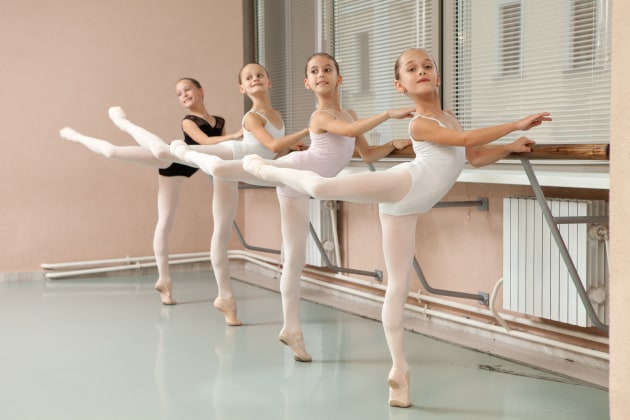How intensely should children train?
How much and how often should young dancers train? How early should they specialise?
As with many elite sports, the training of an elite dancer needs to begin at an early age. We know students need to begin young, but at what age should they begin to concentrate on dance over other activities? How much of their day can children safely devote to their discipline?
According to Dr Jason Lam, a good guide is the recommendations of the Australian College of Sport and Exercise Physicians, which are in line with the American Academy of Paediatrics, the American Orthopaedic Society for Sports Medicine and most other bodies:
At any available opportunity, parents, coaches, athletes and sporting bodies should be made aware of both the lack of benefits and the increased risks of harms associated with early specialisation.
Athletes under the age of 12 should be encouraged to partake in a wide range of physical activities, both organised and informal, to maximise their health outcomes.
Informal physical activity (“free play”) should be encouraged as a valid form of physical activity especially in those under twelve.
Those who wish to focus on a single sport should be encouraged to delay specialisation until after the age of 12, or even until late adolescence.
An athlete’s readiness to specialise should not be determined by physical maturity alone. Social, emotional and psychological maturity is also required in order to successfully specialise in one sport.
Those individuals who have control over the training parameters of young athletes consider the use of simple guidelines in order to minimise the risk of issues relating to early specialisation, sport specialisation and training volume. These include:
Limiting total sport participation (training and competition) to no more than 16 hours per week, irrespective of the total number of sports played,
Ensuring that the ratio of hours spent in organised sport (training and competition) to those spent in “free play” does not exceed 2:1,
Limiting hours spent in organised sport (training and competition) per week such that they do not exceed the athlete’s age. E.g. a 10 year old should not train more than 10 hours per week across all sports,
Adhering to the evidenced-based load guidelines for a specific sport (e.g. Cricket Australia Youth Pace Bowling Guidelines).
Jason Lam was originally a professional dancer before an injury changed his career path to a study of medicine. He was the inaugural Crichton Dance Medicine Fellow with the Australian Ballet and Orchestra Victoria. He holds a Masters in Sports Medicine, a Diploma of Child Health and is a Fellow of the Royal Australian College of General Practice. In addition to his interest in performing artists, Jason was the team doctor for the Sandringham Zebras VFL team and has also worked with Carlton VFLW, Combat Sports Victoria and was part of the Medical Team at the Gold Coast Commonwealth Games 2018. He works in private practice as a sports doctor and GP at Bluff Road Medical Centre in Sandringham, Victoria. www.thedancedr.com.au; www.bluffroadmedical.com.au
This is an extract from the article How Much is Too Much? by Dr Jason Lam, published in the current (April/May/June) issue of Dance Australia. Buy your copy of 'Dance Australia' from your favourite retailer or go on-line and buy here.



